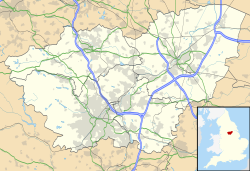| Leah's Yard | |
|---|---|
 Leah‘s Yard frontage on Cambridge Street | |
| General information | |
| Architectural style | Industrial Revolution manufactory |
| Address | Cambridge Street |
| Town or city | Sheffield, South Yorkshire |
| Country | England |
| Coordinates | 53°22′47″N1°28′20″W / 53.3797°N 1.4723°W |
| Current tenants | Various, including Hop Hide Out, Gravel Pit, Chocolate Bar, Mesters’ Market and art galleries |
| Opened | Originally opened early 19th century; reopened 2024, following restoration |
| Website | |
| https://leahsyard.com/ | |
Leah's Yard is a retail and trading hub, and former collection of small industrial workshops situated on Cambridge Street in the city centre of Sheffield in South Yorkshire, England. [1] The building has been designated as a Grade II* listed building and has been noted for its importance as an example of Sheffield's industrial heritage. It has recently undergone a significant restoration to bring it back into use. [2]
